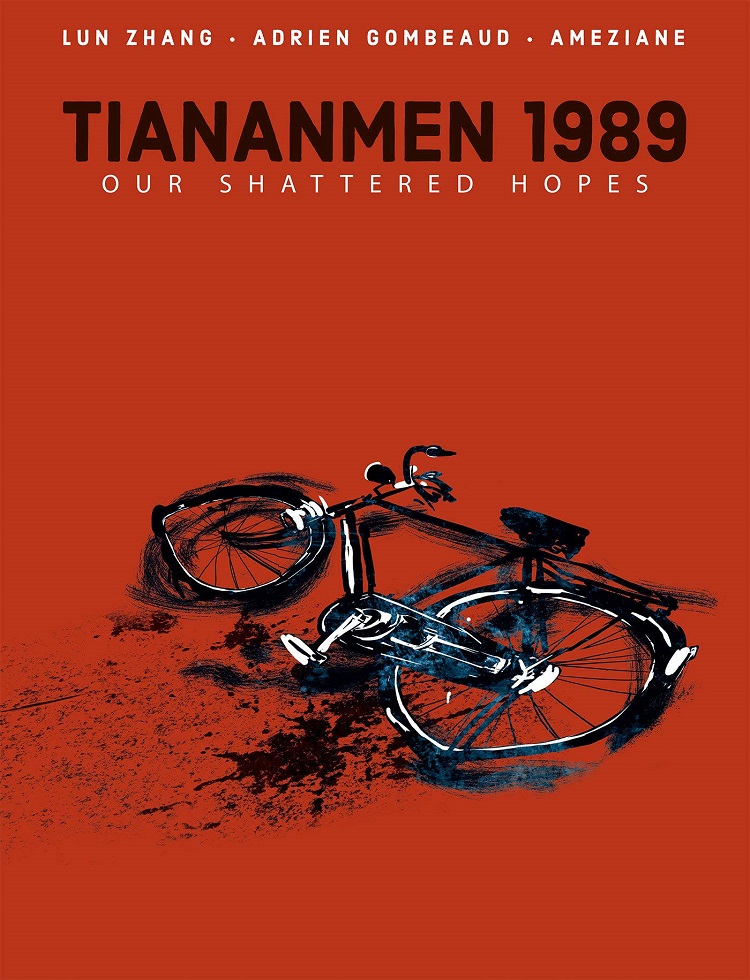
I was not even five years old when the events of Tiananmen Square took place in Beijing, China in 1989. I think the first real exposure I had to it was a reference in a 2005 episode of The Simpsons called “Goo Goo Gai Pan,” in which the family goes to China to help Marge’s sister, Selma, adopt a baby. The family comes across a plaque that read “Tien An Men [sic] Square: On this site, in 1989, nothing happened.” I laughed, sure, but I wasn’t aware of the full story.
That Simpsons joke is still funny to this day. But it also has a darker feel to it because of how truthful it is to China’s attempt to alter and even completely ban the history behind what actually happened. There have been plenty of reports and articles that have come out since that tragedy took place, but the Chinese government has done everything it can to erase it from history books. It shouldn’t come as a shock that “Goo Goo Gai Pan” has been banned from the airwaves in China.
Tiananmen 1989: Our Shattered Hopes is a graphic novel that depicts a firsthand account of someone who was at the Tiananmen protests before the massacre took place. At the time, Lun Zhang was a 26-year-old sociology teacher, and the first to research sociology and economics in China post-Cultural Revolution. He serves as the narrator of this story, but he doesn’t call it a memoir. Instead, he notes that the person in the story, his “fictional twin,” is someone who lived a life much like his.
Throughout the book, Zhang gives readers an outline of the events leading up to the demonstrations first taking place, as well as the key political figures involved. Some of the characters (students, journalists, etc.) had to be fictionalized for the sake of proper storytelling, but it doesn’t lessen the book’s overall impact.
The death of General Secretary Hu Yaobang in April 1989 came as a shock to many, and it was one of the many reasons people took to the streets. They were fed up with the government, and they were not happy with the way the media had been blatantly lying with its reporting of events. What started as a strike organized by students turned into more. It ultimately culminated into the government intervening and opened fire on demonstrators. It turned into one of the bloodiest events in China’s history, and one that its government is continuously trying to erase from memory.
With the exception of Zhang, who puts himself at the forefront of the story by explaining the events that led up to the protests, Tiananmen 1989 doesn’t have a central plot surrounding a particular group of people and their lives before everything happened. It serves as a graphic novel version of a documentary or a non-fiction book. There are certain people that are shown and talked about in the student movement, but the story focuses more on the real, political figures and how everything was handled.
It has somewhat of an emotional disconnect, especially when the gunfire erupts and images are shown of students getting shot. Since Zhang was not present on June 3 and 4, when the bullets started flying, a news report serves as the descriptor of what happened. It is still effective but lessens the emotional impact slightly.
Tiananmen 1989 is an intriguing semi-memoir of Zhang’s recollection of the events. It is gorgeously illustrated, and the climactic moment is haunting to witness in animated form. Zhang does give the viewer a lot of information to read through, but it is a lot of good, useful information that outlines what happened. The book could have done more with character development, but, as a whole, it does serve as a good resource of what happened in Beijing, and why it should never be forgotten.